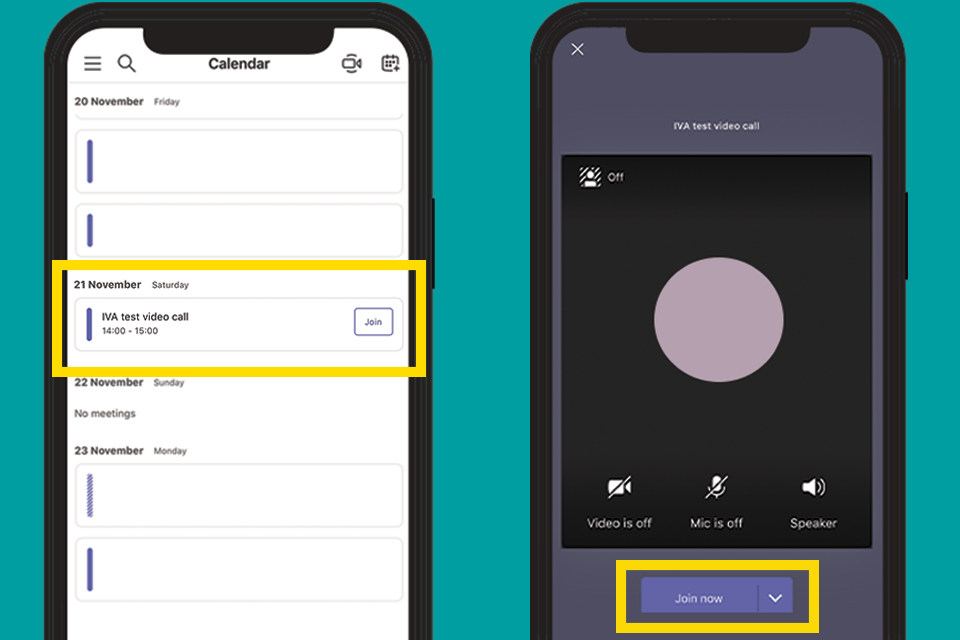Get an Individual Vehicle Approval (IVA) test done by video call
Check if you can get your van, HGV or trailer's IVA test done by video call rather than in person, how to prepare for the test, and how it works.
Applies to England, Scotland and Wales
You might be able to have your Individual Vehicle Approval (IVA) test done by video call rather than in person if you have a suitable site and the right equipment.
You need to confirm this when you apply for your test.
Eligibility
You might be able to have an IVA test done by video call if you have a:
- van or light goods vehicle up to 3.5 tonnes (category N1 vehicles)
- heavy goods vehicle (HGV) over 3.5 tonnes (category N2 and N3 vehicles)
- trailer (category O1, O2, O3 and O4 trailers)
You’ll need:
- a mobile phone, tablet or other device with a working camera and microphone that can run Microsoft Teams (free video calling software)
- a stable internet connection at the site where the vehicle will be tested - this can be a 3G, 4G, 5G or wifi connection, but needs a speed of at least 1.2Mbps
It’s usually easier to hear the examiner if you use headphones with a microphone, but you can do the test without them.
Tools you need
You need a:
- 5 metre (m) tape measure
- plumb bob with 2m line
- chalk marker
- torch
You need a second longer tape measure for some vehicles. You need a:
- 15m tape measure for vans, light goods vehicles or HGVs
- 30m tape measure for trailers
Rules for the site
Your site must have:
- a level inspection area that’s free from hazards or obstructions
- about 3m of clear space in front and behind the vehicle
- a minimum of 2m of clear space either side of the vehicle
It must also have a way to inspect the underside of a vehicle. This can be either:
- an inspection pit
- a hoist (equipment that can raise the vehicle, for example, a column lift)
- a ramp (a platform that can raise the vehicle, for example, a four-post lift)
Arrange the test
In the ‘examination requirement’ section of the IVA application form:
- confirm you can have the IVA test done by video call
- give the email address of the person who will carry out the video call - they must know about the vehicle or trailer and how it’s been built
Accept the video call appointment
You need to accept a video call appointment if DVSA offers you a video call test.
-
DVSA will email you a time and date for your video test. Follow the instructions in the email to confirm or decline the offered appointment.
-
A DVSA examiner will send an appointment request to you which includes a link to a Microsoft Teams video call appointment.
-
Accept the appointment request. This will add an appointment to your calendar. You’ll need to use this to join the video call on the day of the test.
Prepare for the test
Before the test you need to:
- download Microsoft Teams for free for your device
- arrange to have an assistant available on the day to help you for the duration of the whole test
- use chalk or a wax crayon to highlight the vehicle’s lamp and tyre markings
What happens during the test
The vehicle needs to be ready to be inspected at the start of the test.
Make sure:
- you have all the tools you need
- the device you’re using for the video call is fully charged and connected to the internet
Join the video call
-
Open the appointment in your calendar.
-
Select Join to start the video call.
-
Select the microphone and camera icons to make sure they’re turned on.
-
Select Join now.
-
Wait for the examiner to let you into the video call.

2 phone screenshots. The 1st screen shot shows how to open the appointment in your calendar and select join to start the video call. The Second screen shot shows how to turn mic and camera and click join now to start the video call.
How the test works
The examiner will tell you what to do during the test. You will need to do things such as:
- answer any questions the examiner might have about the vehicle
- move safely around the vehicle
- show specific parts of the vehicle - this will include showing the topside and underside of the vehicle
The IVA inspection manual gives the full details of everything the examiner will need to see during the test.
Your assistant will need to help you with tasks such as operating the vehicle’s controls or holding the tape measure.
You and your employer are responsible for your health and safety during the test.
If there’s a problem with the video call
The examiner can stop the test if the video quality is not good enough.
If the examiner has to stop the test because the video quality is not good enough, DVSA will either:
- rearrange a video call test for a different date
- book a test to inspect your vehicle in person
You will not usually have to pay again in either case.
Getting the result
After the test has finished the examiner will let you know if your vehicle has passed or failed the test.
If the vehicle passes
DVSA will send you an individual approval certificate (IAC) by post. You’ll need this certificate when you register your vehicle.
If the vehicle fails
The examiner will tell you why your vehicle failed and how to get another test.
DVSA will email you a copy of the ‘Notification of refusal to issue an Individual Vehicle Approval’ certificate (IVA30). This will include full details on why your vehicle failed the IVA test.